StarCraft 2 Review
Incredible balance and production values save this colossal RTS from feeling stale and dated, but is Starcraft 2 worth the 12 year wait?
It’s always hard to know what a game that is in development for over 5 years will have to offer upon release. Often developer swaps, engine-upgrades and budget constraints cause the final product to feel awkward and unfinished. Starcraft 2 is unusual in that it was under development by the same team for the duration of its lengthy production, and the result is something far more substantial, polished and well thought out than almost everything and anything seen before. Sadly, that is where positive outcomes of the long wait end. There is no way around it, SC 2 feels dated. Really dated. Not in the visual department, but in the flow of the gameplay, the feel of the game, and the structure of the missions and skirmishes. Even the maps and music seem like they belong to an RTS of the mid 90’s. The few modern tweaks and adjustments that made their way into the sequel are essentially cosmetic compared to the relatively unchanged core mechanics.
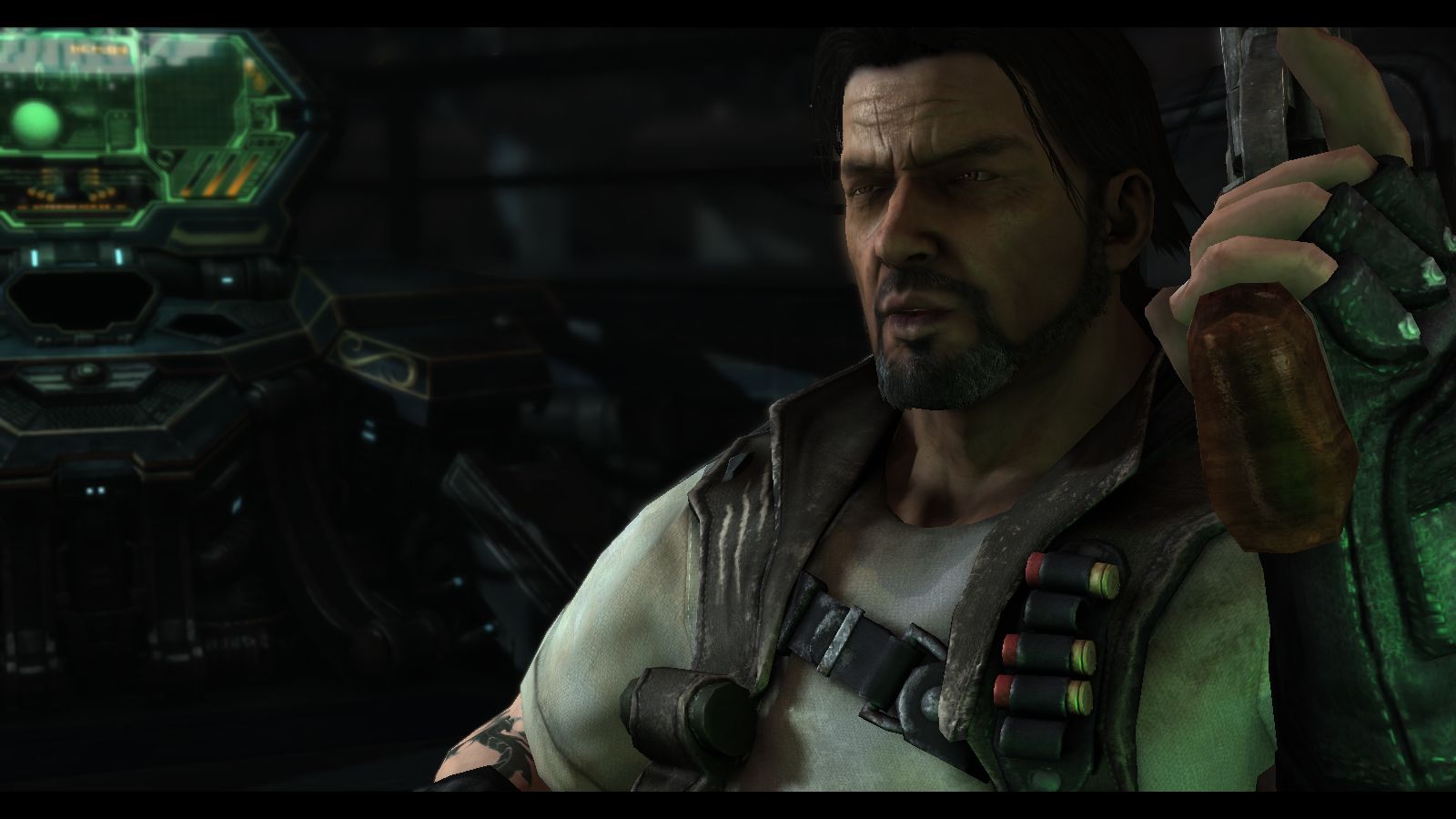
Meet Jim Raynor. Old-Western hero? Space Captain? Or both!
Starcraft 2 feels like a game that was developed in 2 years, not 7. Other than the visual upgrade, very little has changed in terms of units, gameplay, mission design and multiplayer offerings. It’s still really impressive in many ways, but after such a long wait one couldn’t help but wonder if something truly extraordinary would hit the shelves when the game was finally released. Some groundbreaking new innovation that changes everything, but doesn’t affect the core of the series. It can be said for blizzard that they have a huge fan base, and that adjusting the core game too much would likely result in backlash from the hardcore SC 1 community, but still, it’s a little disappointing that so little has changed in all this time.
The singleplayer campaign of the first game in the Starcraft 2 trilogy, Wings of Liberty, follows the Terran race and picks up several years after the conclusion of the original game, and if you’re having trouble remembering where that was, the game does an excellent job of bringing you up to date, or, if your new to the series, summarizing the story so far during the instillation of the game. The campaign is fairly lengthy at around 15 hours, and the story of the sequel, while not terribly original or exciting, is very well told and does a great job of developing the characters. This is primarily done through a kind of point-and-click adventure system that occurs between missions where you can click around your ship and interact with different objects and characters, engaging in dialogue and further fleshing out the story.
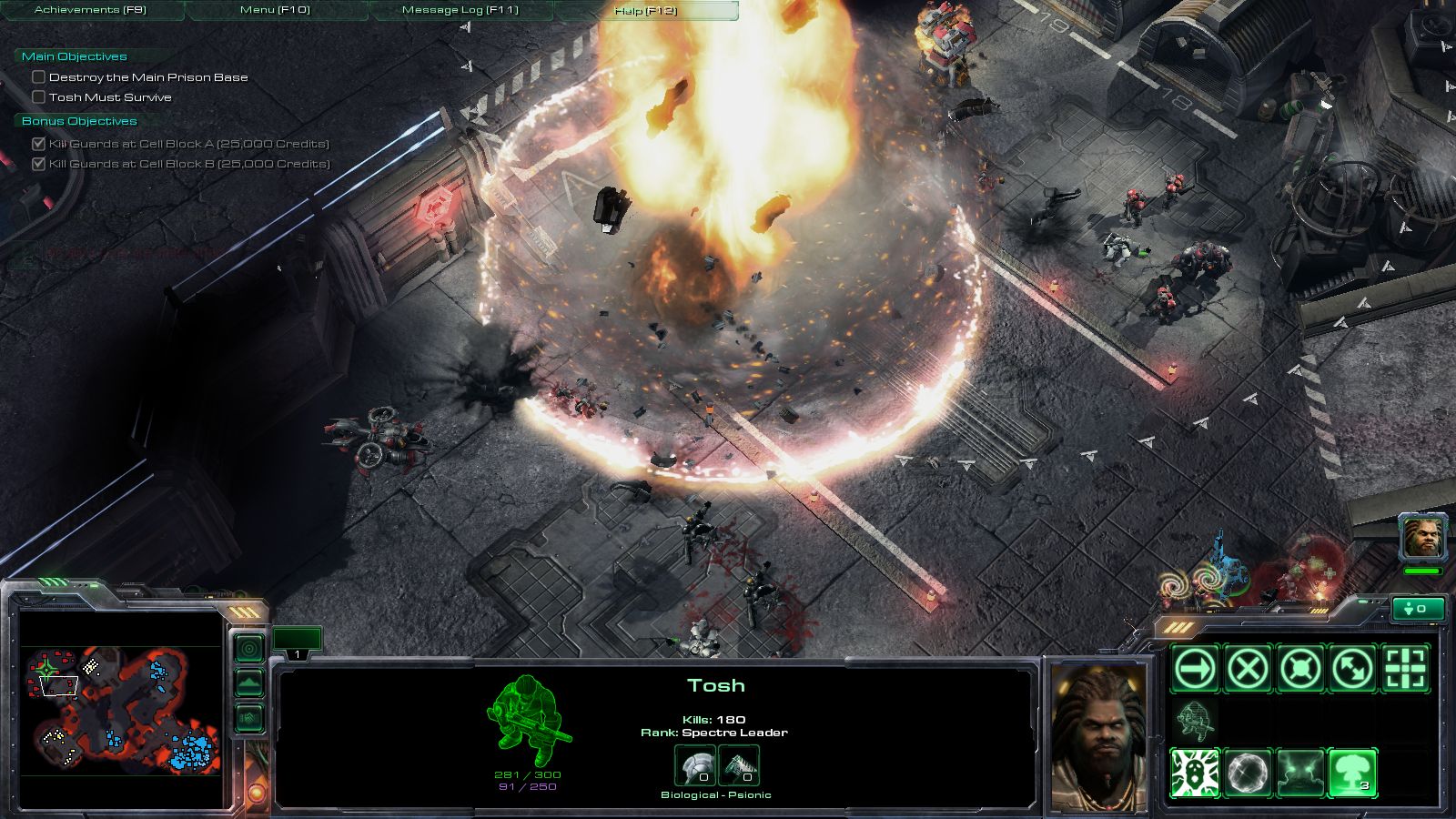
Have no fear, there are plenty of big explosions to go around!
Each of the many cut-scenes encountered on this ship has obviously been hand-crafted with care, and it shows; each cut scene, be it a few lines of dialogue or an epic battle, is incredibly enjoyable to watch. You will grow to relish the character interactions and dialogue that compose much of the drama and accounts for much of the depth of the singleplayer campaign. While not much of what you are doing in the game hasn’t been done before, the way that it connects you to the story makes everything feel much more important. This effect goes a long way to immersing you in the campaign which essentially serves as a giant tutorial for the multiplayer component.
The missions themselves are the star of the show, and in many ways are the highlight of the entire game. At first you control only a few units, and a few unit types, while you get used to the controls and the feel of the game. The most impressive aspect is that each mission is entirely different, and will always have you doing multiple things at once. The variety of the missions is staggering, especially given the high number and quality of them. One mission might have you defending a base during the night time and going on the offensive during the daytime; another might have you racing against another group to gather more resources; while another still might see you sneaking into a base with a single powerful unit. Each mission is different from the last, and they are all done in such a way that different strategies can be used to complete them.
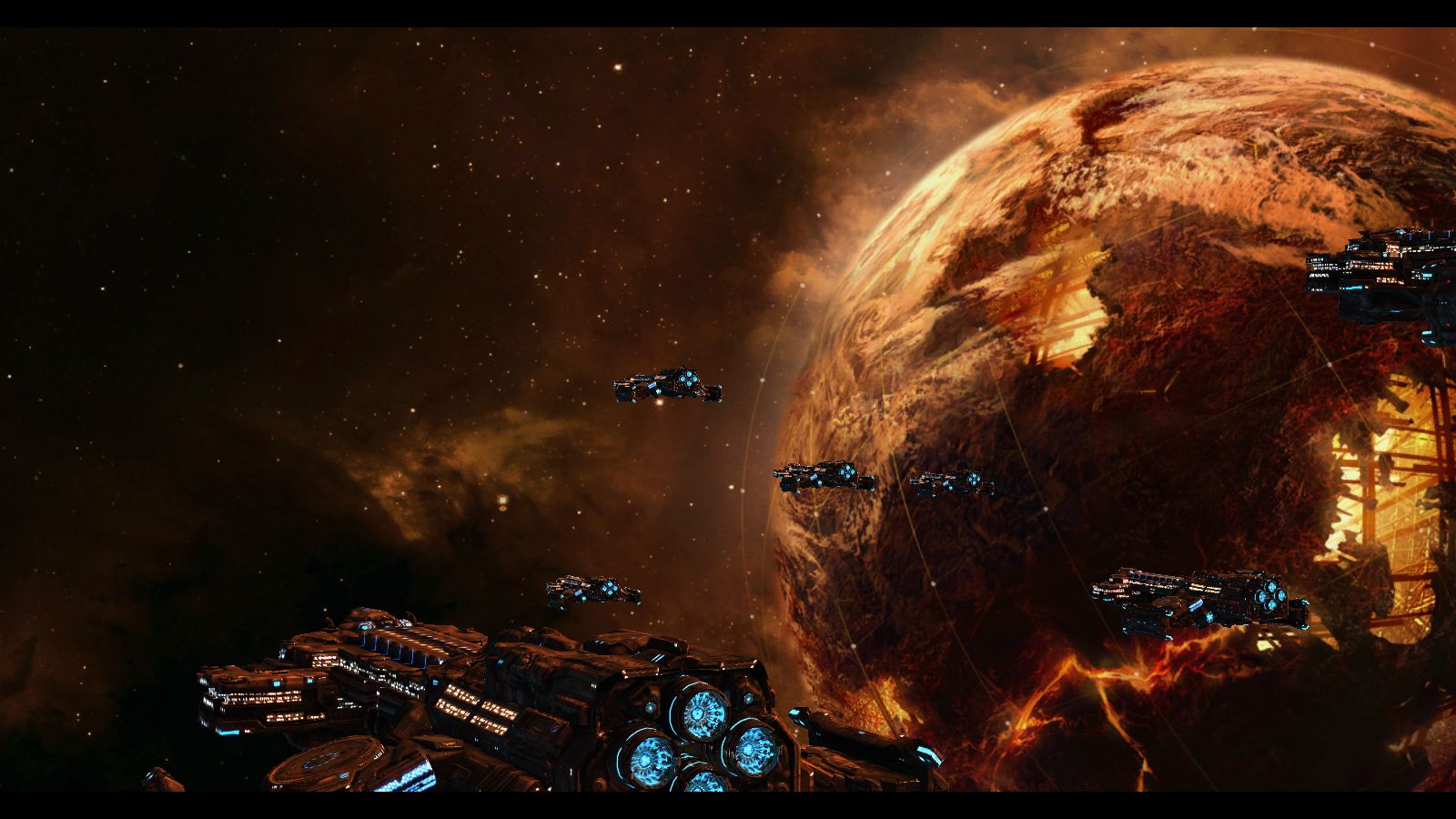
The cutscenes are numerous, gorgeous, and highly entertaining
The only real downside to the variety of the missions is that you are bound to encounter a few that require you to do something that clashes directly with your play style, and cause you incredible frustration. One mission that took me almost twice as long as any other to finish had you attempting to destroy multiple infested human colonies which took the form of enemy bases while defending your own; while you are doing this new enemy bases begin to pop up as new human colonies are infested. Your primary objective is to destroy the infested settlements, which are also enemy bases, but you are also supposed to prevent further infection of new human colonies. It seemed that no matter what I did, I was falling behind and was unable to save a single settlement from infestation. It took me 2 hours to finish that mission, which with the right strategy could probably have been completed in about 30 minutes.
The way you build units, gather resources and control armies has not changed over the last 12 years. Much of your time, in both the multiplayer and singleplayer, will go into building a base with extensive defenses against both land and air units. Its RTS gameplay at its most basic – to succeed all you have to do is gather more resources, build more units, and build the right units that will counter your enemies units. It sounds simple, but there are so many different units, between the three races, that the number of possible unit conflicts is staggering. You as the player must take all of them into account so that you can prevent your opponent from exploiting your weaknesses. Those who love this core RTS gameplay will truly love Starcraft 2, as both the singleplayer and multiplayer offer this streamlined strategy experience in droves. If you prefer the tactical gameplay of more modern RTS’s like Company of Heroes, you may find the emphasis on efficiency rather than unit placement and build orders to be frustrating, and Starcraft 2 might not be for you.
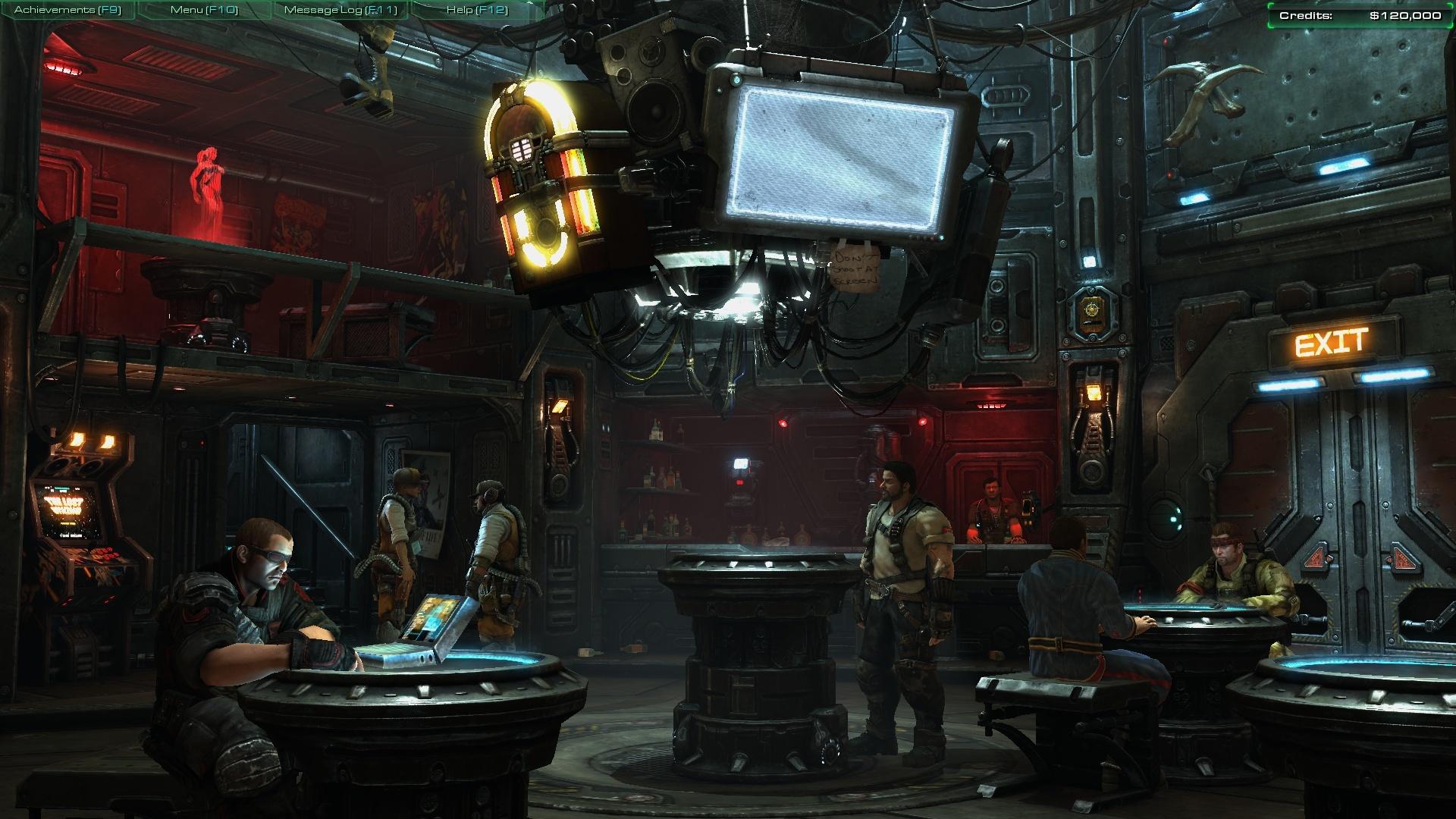
Weary from battle? Stop off at the Cantina for a rest or a friendly chat.
Seeing as how the original Starcraft is in many ways the most successful and most popular RTS to play online ever made, the prospect of diving into the sequels almost identical multiplayer component seems highly intimidating. Thankfully the all new Battle.net 2.0 allows for the player to be immersed gently and gradually into the games hyper-competitive multiplayer. There are basic tutorials, advanced challenges (and they are very challenging) which prepare you for the fast pace and required efficiency of the multiplayer. You can play games against the AI on the multiplayer maps, and when you feel ready to take on human opponents you start off in the ‘practice’ league which has a slower pace and maps designed for beginners. Once a newcomer to the series has gone through all this, the regular online multiplayer should not present any serious problem. If you are a Starcraft veteran and already know how to play, everything up to and including the practice league can be skipped. Once you feel ready to go into the main ‘leagues and ladders’ multiplayer pool, you are required to play 5 ‘placement’ matches which determine your skill and will place you in the appropriate league and division. If you improve, you can move up in leagues and face more skilled opponents.
Despite the complexities that surround the games competitive multiplayer, the actual gameplay is simply pure, straight up old-school RTS gameplay. There is only really one game mode with a few variants; destroy the other team’s base before they destroy yours. Everything else is up to you; the strategy, the tactics, even the pace of the game – matches can be over in less than 15 minutes, or they can stretch on for hours depending on how even the teams are, or the tactics used. A early game rush is just as legitimate a strategy as building up a huge army of the most powerful units. At a glance this model of gameplay may seem overly simplistic, but it is incredibly engaging thanks to the multitude of tasks you are faced with as soon as the game begins. You need to build a strong economy, build up a base with defenses, and build up an army for offensive purposes. You are always racing against the other team to do it faster and more efficiently, for if you fall behind you risk losing your entire base during the first attack.
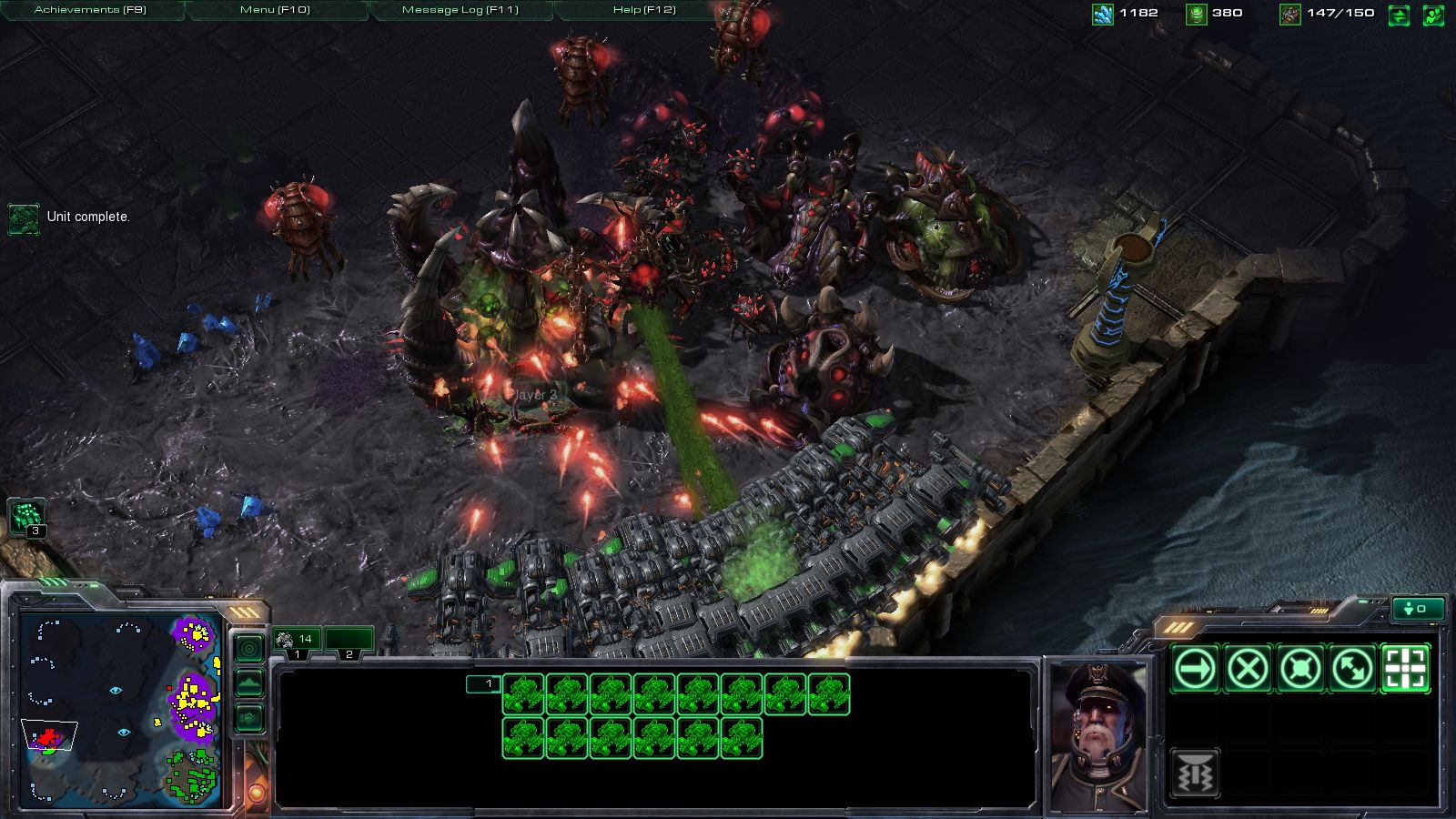
Beware the battlecruiser blob of death!
There is also the matter of different races which all play very differently and need to be learned offline before they can be used effectively in multiplayer games. The Terran, whom you play as during the campaign, are tough, but their units are more expensive and take longer to build. The Zerg are essentially a swarm race and their strength comes from their numbers. The Protoss are more technologically advanced and have powerful units that once fully upgraded are nearly unstoppable. Each play very differently and require time and practice to learn well.
It is a bit disappointing that there aren’t some different game modes that don’t revolve around destroying the other team’s base, but thanks to the great community, developer support and balance the multiplayer is still very fun and extremely addicting. This mode of the game has seen the least amount of change over the past 12 years, meaning that Blizzard definitely subscribes to the ‘don’t fix what ain’t broke’ philosophy of game design.
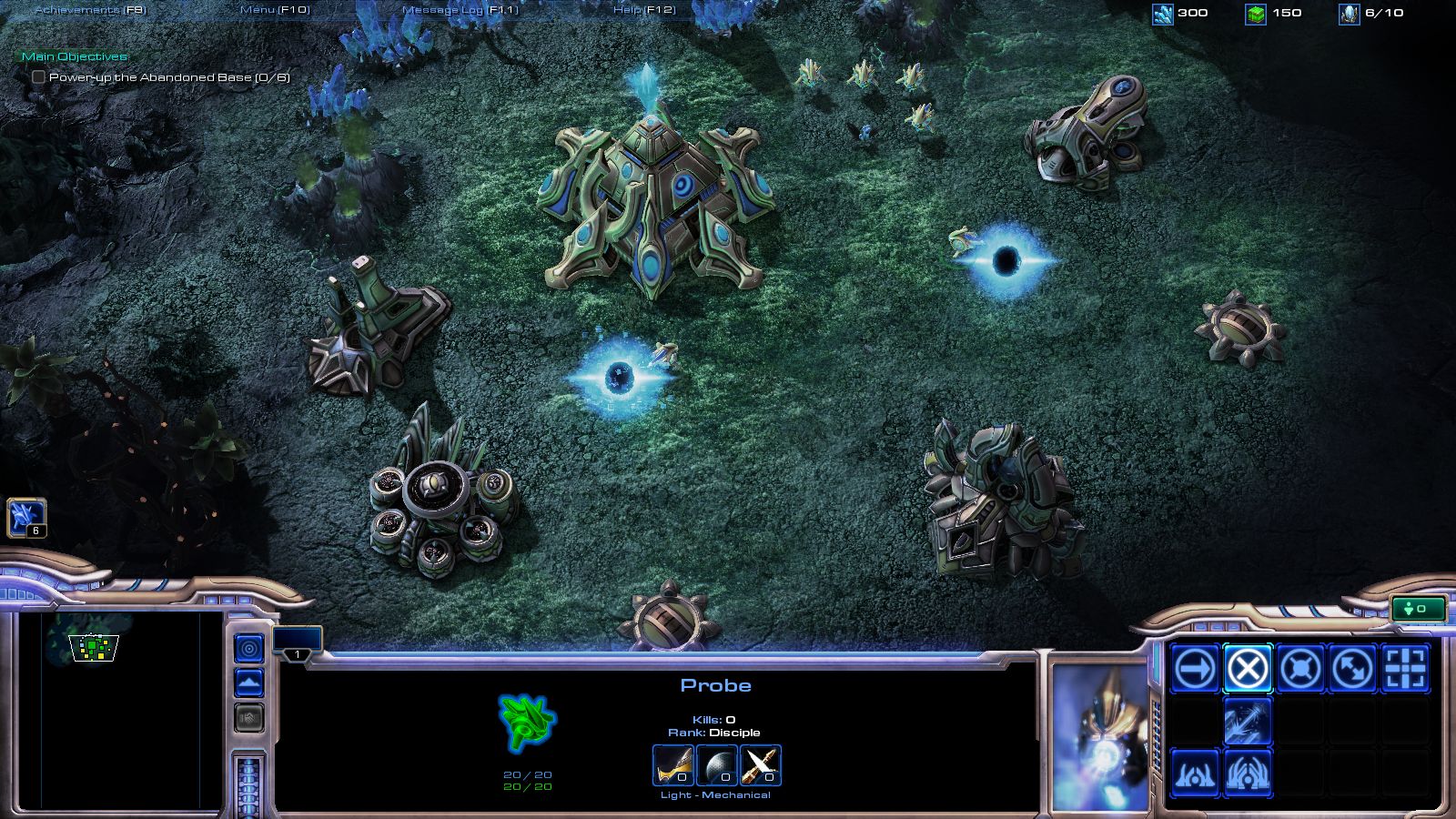
You will spend most of your time building up huge, well defended bases
Another new feature of Battle.net 2.0 is the comprehensive achievement system that spans all modes of play. You earn achievements for doing almost everything, and you can showcase a few that you have earned that you think are particularly impressive. Also your friends on Battle.net will receive a pop-up notification when you earn an achievement. This may not be important for everyone, but those who like striving for and earning achievements will be giddy with glee as Starcraft 2 has hundreds of achievements to earn across all modes, even offline skirmishes against the A.I.
Visually Starcraft 2 is fairly impressive, especially considering the scale of some of the battles in multiplayer games. The game allows for hundreds of units to be on screen without the performance taking too big of a hit, which is very impressive given the fine details that have gone in to most of the visual presentation. While singleplayer levels are mostly very interesting to look at and run your troops through, the maps in multiplayer are surprisingly bland and uninspired. They are usually just a bunch of different levels of terrain with resource fields scattered about with a few bottlenecks here and there where defenses can be set up. Luckily there is a great map editor so that user-maps are viable on online play, but only in custom games.
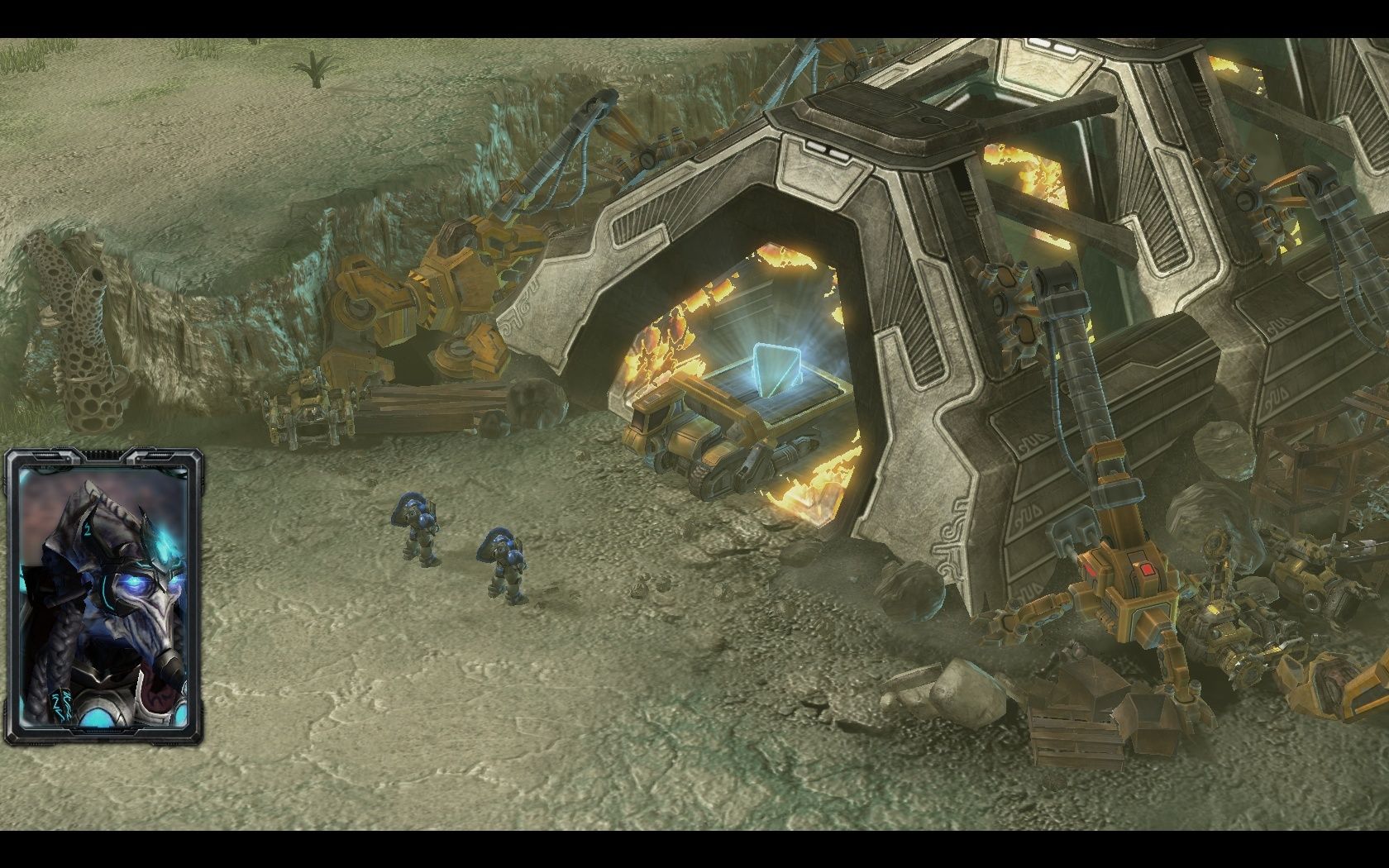
Oh, look what we found
The sound in Starcraft 2 is easily the weakest aspect of the games presentation; while the voice acting is consistently excellent, riff-heavy music and rather static sound effects leave much to be desired. The sound design isn’t terrible - it simply isn’t up to par with the rest of the games presentation. The sound and music go further to making the game feel dated; basically it sounds like a RTS game would have 10 years ago.
When it comes down to it, Starcraft 2 is a well-balanced, highly polished and extremely well made RTS. It does feel old fashioned, but seeing as how nothing is wrong with the gameplay model of RTS games from the 90’s this isn’t necessarily a major issue. If you like RTS games, you will probably be able to derive many hours of fun out of this content-full game, even if the core mechanics haven’t really changed over the last 12 years.
 Comments
Comments
|
||||||||||||||||||||||||||||||


 Aug 18, 2010 11:03:30 (Aug 18, 2010 11:03)
Aug 18, 2010 11:03:30 (Aug 18, 2010 11:03)

















